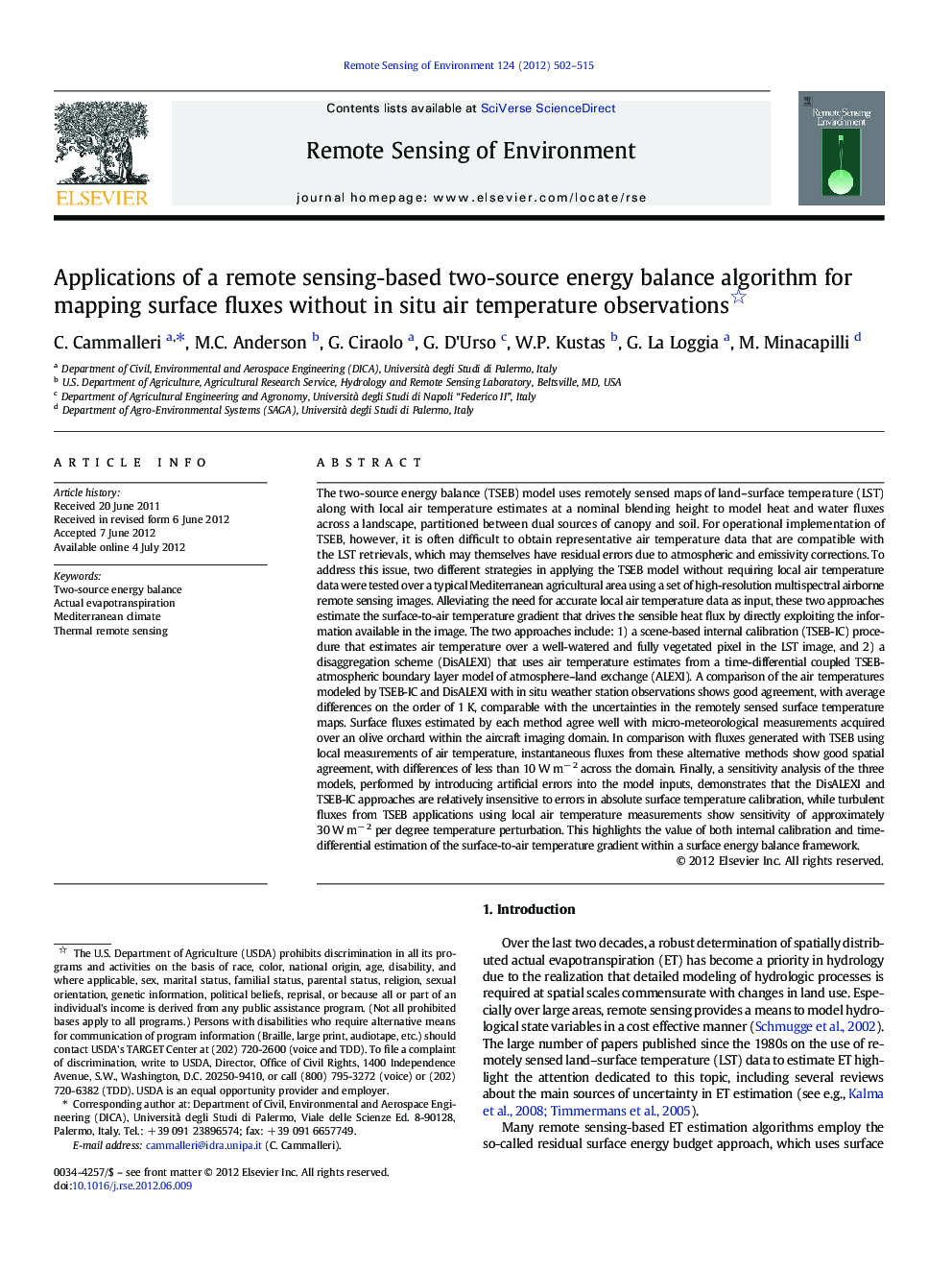| کد مقاله | کد نشریه | سال انتشار | مقاله انگلیسی | نسخه تمام متن |
|---|---|---|---|---|
| 4459025 | 1621276 | 2012 | 14 صفحه PDF | دانلود رایگان |

The two-source energy balance (TSEB) model uses remotely sensed maps of land–surface temperature (LST) along with local air temperature estimates at a nominal blending height to model heat and water fluxes across a landscape, partitioned between dual sources of canopy and soil. For operational implementation of TSEB, however, it is often difficult to obtain representative air temperature data that are compatible with the LST retrievals, which may themselves have residual errors due to atmospheric and emissivity corrections. To address this issue, two different strategies in applying the TSEB model without requiring local air temperature data were tested over a typical Mediterranean agricultural area using a set of high-resolution multispectral airborne remote sensing images. Alleviating the need for accurate local air temperature data as input, these two approaches estimate the surface-to-air temperature gradient that drives the sensible heat flux by directly exploiting the information available in the image. The two approaches include: 1) a scene-based internal calibration (TSEB-IC) procedure that estimates air temperature over a well-watered and fully vegetated pixel in the LST image, and 2) a disaggregation scheme (DisALEXI) that uses air temperature estimates from a time-differential coupled TSEB-atmospheric boundary layer model of atmosphere–land exchange (ALEXI). A comparison of the air temperatures modeled by TSEB-IC and DisALEXI with in situ weather station observations shows good agreement, with average differences on the order of 1 K, comparable with the uncertainties in the remotely sensed surface temperature maps. Surface fluxes estimated by each method agree well with micro-meteorological measurements acquired over an olive orchard within the aircraft imaging domain. In comparison with fluxes generated with TSEB using local measurements of air temperature, instantaneous fluxes from these alternative methods show good spatial agreement, with differences of less than 10 W m− 2 across the domain. Finally, a sensitivity analysis of the three models, performed by introducing artificial errors into the model inputs, demonstrates that the DisALEXI and TSEB-IC approaches are relatively insensitive to errors in absolute surface temperature calibration, while turbulent fluxes from TSEB applications using local air temperature measurements show sensitivity of approximately 30 W m− 2 per degree temperature perturbation. This highlights the value of both internal calibration and time-differential estimation of the surface-to-air temperature gradient within a surface energy balance framework.
► Reliable ET estimation using a TIR-based two-source SEB without local air temperature.
► The use of high resolution airborne data allows detailed field scale analysis.
► TSEB-IC results are satisfactory both for air temperature and surface flux estimation.
► Reliable estimations from DisALEXI despite the relatively small study area (1.6 km2).
► Reduced sensitivity to LST errors using TSEB-IC and DisALEXI in comparison with TSEB.
Journal: Remote Sensing of Environment - Volume 124, September 2012, Pages 502–515